- Driver shortages continue to plague road transport operators in all regions
- Governments must act on safe and secure parking to improve working conditions, training and lowering minimum driver age, especially to help steer unemployed youth and women into the profession
Surveying 800 road transport companies from over 20 countries, IRU found that driver shortage was most acute in Eurasia, where last year 20% of driver positions were not filled. China was the least affected country in 2020 with only 4% of jobs open.
Elsewhere, driver shortage was less serious in 2020 than 2019 due to the pandemic. In Europe, unfilled driver positions fell by around three quarters, from 20% to 5% for bus and coach drivers and from 24% to 7% for truck drivers.
Unfilled jobs set to soar in 2021
Transport companies however forecast driver shortages to intensify again in 2021 as economies recover and demand for transport services increases. European companies are expecting a 17% shortfall in drivers this year. This shortfall is expected to reach 18% in Mexico, 20% in Turkey, 24% in Russia, and almost one third in Uzbekistan.
“Driver shortage threatens the functioning of road transport, supply chains, trade, the economy, and ultimately employment and citizens’ welfare. This is not an issue that can wait, action needs to be taken now,” said IRU Secretary General Umberto de Pretto.
The IRU survey also investigated the reasons for driver shortage, finding that a lack of trained drivers was the main cause in all regions (38% of respondents).
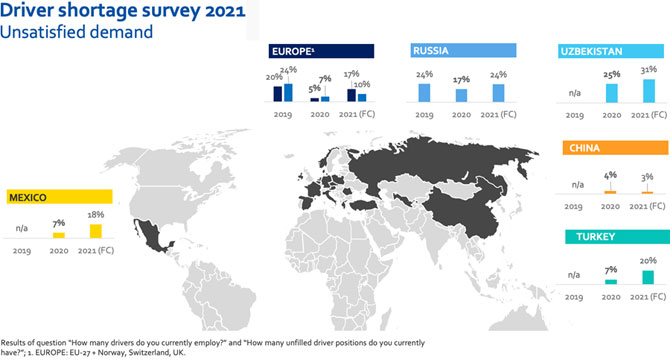
Women and youth driven away
Challenging working conditions, further exacerbated by the pandemic, and difficulties attracting women and young people to the profession were also cited as issues.
The survey points to mixed results in the industry’s quest to attract more women across all parts of the sector. Only 2% of truck drivers globally are women and all countries surveyed saw the percentage of women truck drivers fall. However, there were encouraging signs in Europe with the share of female bus and coach drivers climbing from 10% to 16% of the total workforce in 2020.
The percentage of truck drivers under 25 fell nearly everywhere in 2020, from already low levels down to 5% in Europe and Russia, 6% in Mexico and 7% in Turkey. With the average age of professional truck drivers globally now close to 50, and steadily growing older each year, this demographic time bomb will only get worse without action to reduce minimum driver age.
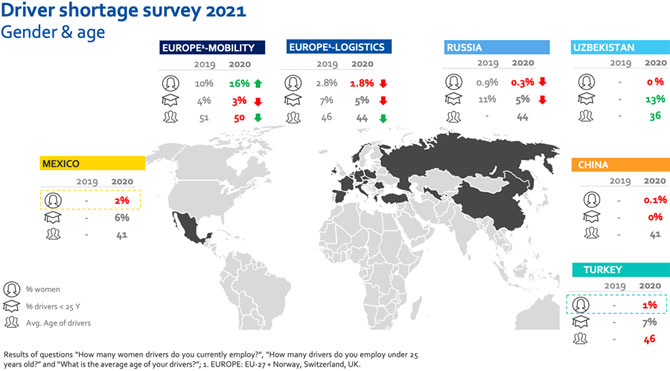
Action needed on age, parking, training and working conditions
With youth unemployment well over 30% in some countries, attracting young people to the sector should be simple. However, the minimum age for professional drivers is 21 or higher in many places, creating a large gap between leaving school and taking the wheel. Governments should set the minimum age for trained drivers at 18, with training starting from 17, in order to unlock the full potential of the profession as a global job engine.
More investment in safe and secure truck parking areas to fix the current massive global shortfall would make long-haul driver conditions safer and get more people behind the wheel, especially women.
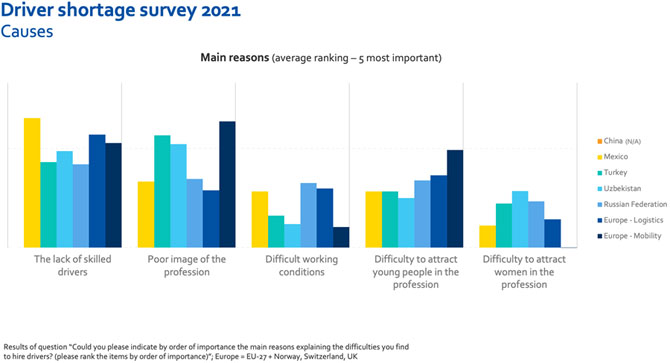
Training and certification remain vital to attract and develop skilled drivers, especially with new technology, safety expectations and compliance standards. The new IRU RoadMasters Programme helps the industry to invest in people to address driver shortages.
The effect of COVID-19 restrictions on professional drivers, especially with the media highlighting their poor treatment at delivery sites and temporary border controls, negatively impacted the attractiveness of the profession last year. Working conditions will improve when drivers are treated with more respect. IRU has launched a global charter on driver treatment to support this.
“The solutions are there, but if governments do not act now to ease access to profession, improve working conditions and upskill the workforce, driver shortage will continue to disrupt and eventually irreparably damage vital mobility networks and supply chains,” concluded Umberto de Pretto.
(1) International Labour Organization, ILOSTAT database, 2020.





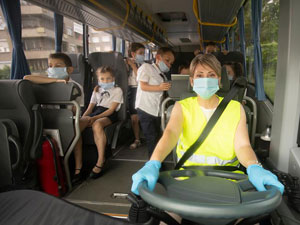










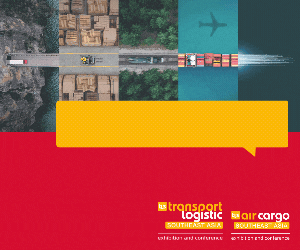


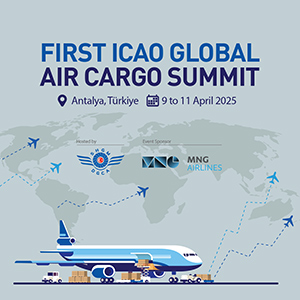









Türkçe karakter kullanılmayan ve büyük harflerle yazılmış yorumlar onaylanmamaktadır.